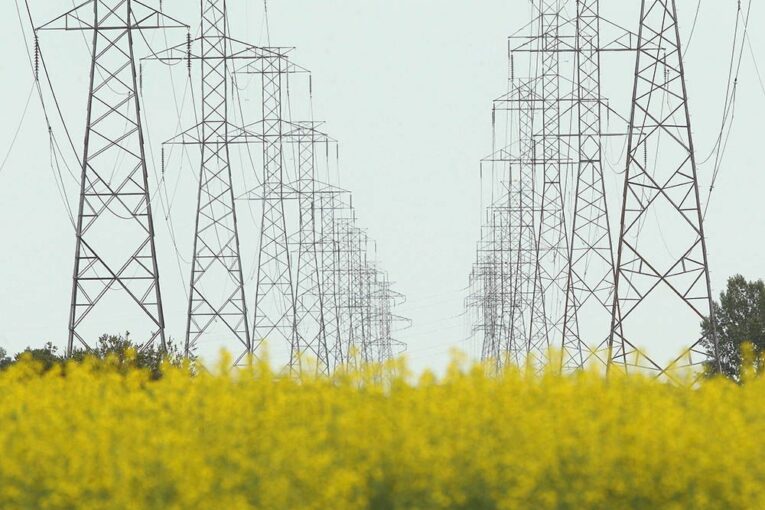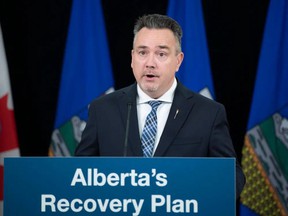
There’s plenty of talk about Canada hitting its net-zero emissions target by 2050, but how about reaching the goal 15 years early?
That’s the looming challenge facing Canada’s electricity system, including power generators in Alberta.
The federal Liberals vowed during the summer election campaign to establish a clean electricity standard that will “achieve a 100 per cent net-zero emitting electricity system by 2035.” Prime Minister Justin Trudeau also promised to develop additional tax credits for renewable energy and battery storage initiatives.
For Alberta’s power producers, it will be a formidable task, but one that industry players believe can be done — not easily, but it is possible.
“It is going to take a significant amount of investment to get there,” said Tim Boston, chair of the Independent Power Producers Society of Alberta (IPPSA), which began its annual conference in Banff on Monday.
“Accelerating the timeframe just means you have to deploy more capital faster.”
At Monday’s conference, the issues surrounding net-zero emissions, ESG and energy transition took centre stage. The sector will be an essential player to enable the province — and the country — to reach its climate ambitions.
Electrification will be critical with more electric vehicles set to hit the road in the coming years and more generation will be needed.
More renewable energy is slated to come online and more investment into emerging technologies — such as battery storage or carbon capture, utilization and storage (CCUS) projects — will be required to reduce emissions.
It comes as Canada backed the Glasgow climate pact at the COP26 summit and has also promised to place a cap on emissions from the country’s oil and gas sector.
For Alberta’s rapidly evolving electricity system — which is already phasing out coal-fired power generation by 2023, seven years ahead of the 2030 deadline — it marks another major shift.
Dale Nally, Alberta’s associate minister of electricity, told the conference new legislation will be introduced this week to modernize the electricity grid.
It will address areas such as the emergence of energy storage, as a number of projects have been proposed for the province. Such technology can help improve grid efficiency by storing excess energy and by providing reliable backup power, he said.
“Energy storage is an incredible technology that will allow us to deal with the biggest challenge of renewable energy, which is the intermittency of it,” Nally told the audience.
He noted the province has already seen $5 billion of investment flow into new power generation since 2019, including more than $2 billion directed to renewable energy projects.

According to a recent report by the Alberta Electric System Operator (AESO), which manages the provincial grid, about half of all generation under construction is for renewable energy.
As for the federal net-zero target for the power industry, Nally said in a statement that Ottawa’s commitment “has been absent of details or any feasible plan,” which mirrors the province’s criticism of the federal emissions cap on the oil and gas sector.
“There has been no proposal on how to cover the staggering costs or even how to affect the change in a relatively short period of time,” he said.
Many of the speakers at Monday’s conference said technology is the key to lowering emissions in the coming years. But they also spoke about the need to focus on affordability for consumers.
To hit the trifecta of low energy costs for consumers, reliable supply and the ability to reduce emissions, “it requires in Alberta — and other places like it that don’t have plentiful hydro — that we have natural gas as a backup,” said Kate Chisholm, Capital Power’s chief sustainability officer .
According to AESO, natural gas supplied at least 46 per cent of Alberta’s electricity generation in 2020, up from 28 per cent in 2016, while coal-fired generation dropped to 39 per cent, and renewables (wind, solar and hydro) increased to 14 per cent.
Ed Rihn, a senior vice-president with Berkshire Hathaway Energy Canada, pointed out that in Iowa, 84 per cent of its electricity needs were met last year by renewable energy, in part because the state has strong connections to neighbouring markets through transmission interties.
Alberta lags far below that level, he noted.
“We are also the least-connected province, as a percentage of load, with our neighbours,” Rihn said.
“If we want to keep electricity rates as affordable as we can, we are going to have to maximize the amount of renewable energy that we have on the Alberta grid, and that is going to require stronger interties.”
TransAlta Corp. manager of market policy Akira Yamamoto said the company sees an opportunity ahead for energy storage technologies, including long-duration batteries, “which we think will unlock a lot of the value for our renewable grid.”
In October 2020, the Calgary-based company began operating the province’s first utility-scale, lithium-ion battery storage facility, which can store electricity from the company’s Summerview wind farm in southern Alberta and then discharge it when needed.
The shift to net-zero will present plenty of obstacles, but it will also provide opportunities for new investments and continued innovation.
As Alberta has shown with the challenge to phase out coal, the system can evolve, if there’s clarity from policy-makers and flexibility in solving the problems at hand.
And it requires plenty of investment.
“It’s not impossible. There are technologies out there that can get you there. We know them. We know they cost a fair bit,” Boston added.
“It’s a question of what is the most economical way to get there to do it.”
Chris Varcoe is a Calgary Herald columnist.
You can read more of the news on source
